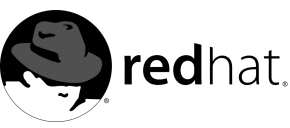
Introduction
Welcome to the Official Red Hat Linux x86 Installation Guide. This guide contains useful information
to assist you during the installation of Red Hat Linux. From fundamental concepts such as installation
preparation to the step by step installation procedure, this book will be a valuable resource as you
install Red Hat Linux.
This manual will walk you through a typical installation using the Red Hat Linux CD ROMs. Once
you have completed the installation as outlined in this manual, you will have a fully functioning
system.
1. Document Conventions
When you read this manual, you will see that certain words are represented in different fonts, type
faces, sizes, and weights. This highlighting is systematic; different words are represented in the same
style to indicate their inclusion in a specific category. The types of words that are represented this way
include the following:
command
Linux commands (and other operating system commands, when used) are represented this way.
This style should indicate to you that you can type the word or phrase on the command line
and press [Enter] to invoke a command. Sometimes a command contains words that would be
displayed in a different style on their own (such as filenames). In these cases, they are considered
to be part of the command, so the entire phrase will be displayed as a command. For example:
Use the
cat testfile
command to view the contents of a file, named
testfile
, in the current
working directory.
filename
Filenames, directory names, paths, and RPM package names are represented this way. This style
should indicate that a particular file or directory exists by that name on your Red Hat Linux
system. Examples:
The
.bashrc
file in your home directory contains bash shell definitions and aliases for your own
use.
The
/etc/fstab
file contains information about different system devices and filesystems.
Install the
webalizer
RPM if you want to use a Web server log file analysis program.
application
This style should indicate to you that the program named is an end user application (as opposed
to system software). For example:
Use Mozilla to browse the Web.
[key]
A key on the keyboard is shown in this style. For example:
To use [Tab] completion, type in a character and then press the [Tab] key. Your terminal will
display the list of files in the directory that start with that letter.
[key] [combination]
A combination of keystrokes is represented in this way. For example:
The [Ctrl] [Alt] [Backspace] key combination will exit your graphical session and return you to
the graphical login screen or the console.
footer
Our partners:
PHP: Hypertext Preprocessor Best Web Hosting
Java Web Hosting
Inexpensive Web Hosting
Jsp Web Hosting
Cheapest Web Hosting
Jsp Hosting
Cheap Hosting
Visionwebhosting.net Business web hosting division of Web
Design Plus. All rights reserved

